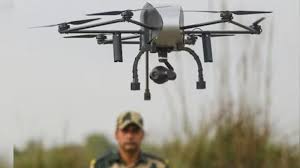Drone swarming to smarter war rooms: Army’s AI roadmap for ops by 2026-27

India is rapidly transforming its military capabilities, and the Army’s latest Artificial Intelligence (AI) roadmap highlights this shift. With an ambitious goal of full-scale integration by 2026–27, the Army aims to adopt AI across operations—from drone swarms to intelligent war rooms. This transition marks a major step toward faster, smarter, and more automated battlefield decisions.
Why the Push for AI Now?
Recent missions like Operation Sindoor have shown the need for real-time information and swift responses. In high-stakes situations, delayed decisions can cost lives. The Army’s leadership recognized this gap and decided to accelerate its AI development.
Unlike traditional warfare, modern conflicts demand speed and data-driven planning. Therefore, India is now investing in technologies that provide an edge in both combat and strategy.
Drone Swarms: The Eye in the Sky
At the heart of this transformation lies drone swarming. These small, AI-powered drones operate in groups and communicate with each other in real time. Together, they scan wide areas, track enemy movement, and even carry out strikes when needed.
Drone swarms react instantly to threats. If one drone detects an obstacle or signal jam, it alerts others to adapt. This agility makes them ideal for surveillance missions along India’s challenging borders.
Besides saving time, swarming reduces human risk. Soldiers can focus on mission strategy while drones handle dangerous reconnaissance tasks.
Smart War Rooms with AI Brains
The Army is also working on AI-powered war rooms. These advanced command centers will process data from satellites, drones, sensors, and social media. Using this information, commanders will get a clear, updated picture of battlefield conditions.
With the help of AI, these systems can highlight threats, suggest troop movements, and simulate battle outcomes. They make decisions faster than any human team could on its own.
What sets this system apart is its use of large language models (LLMs). These tools can understand and summarize massive text datasets. As a result, they assist in decoding enemy signals, analyzing open-source information, and planning responses more effectively.
Building an AI-Ready Force
To bring these innovations to life, the Army has created a specialized AI Lab under the Directorate General of Infantry Services. This lab will test new ideas, integrate AI into existing systems, and oversee deployment.
All new Army equipment must now meet AI-readiness standards. Meanwhile, older systems will receive upgrades to ensure compatibility with AI tools.
Moreover, the Army is working closely with startups, research institutions, and private companies. These partnerships aim to accelerate development and reduce reliance on foreign technologies.
Technology Clusters: Organized Innovation
To manage the wide range of tech efforts, the Army has formed 16 core clusters. Each group focuses on a key area such as:
- Artificial Intelligence and Machine Learning
- Unmanned systems and robotics
- Cybersecurity and blockchain
- Loitering munitions and drone defense
- 3D printing and sensor technology
This setup helps different teams work in parallel, making progress faster and more focused. If one cluster creates a useful tool, others can adopt it without delay.
Training the Troops for Tech
Technology can only help if people know how to use it. That’s why the Army is investing heavily in training and capacity building.
Soldiers at all levels are learning to use AI tools. Officers are studying data analysis, coding, and digital planning. Even basic training now includes digital literacy modules.
This shift prepares the force not just to use AI but to grow with it. In time, tech-savvy soldiers will lead operations where speed, accuracy, and data matter most.
What Lies Ahead?
The AI roadmap doesn’t stop at drones and smart war rooms. The Army also plans to enhance logistics, battlefield medicine, and supply chains using AI. For example:
- Blockchain will track weapons and medical supplies.
- IoT sensors will monitor equipment health.
- AI bots will predict terrain risks and recommend routes.
As India modernizes its forces, it also aims to lead responsible and ethical AI use in the military. The Army is aware of risks like hacking, bias in data, or misfiring autonomous tools. Therefore, it plans to include robust safety protocols in every AI rollout.
Final Thoughts
The Indian Army’s AI roadmap is more than just a tech upgrade—it’s a strategy shift. By 2026–27, the Army hopes to blend human experience with machine precision. This combination will shape the future of India’s military operations.
From drone swarms that scan the skies to AI war rooms that guide missions, the future soldier will be smarter, faster, and better equipped. In this new era of warfare, intelligence isn’t just on the battlefield—it’s built into the tools that define it.






